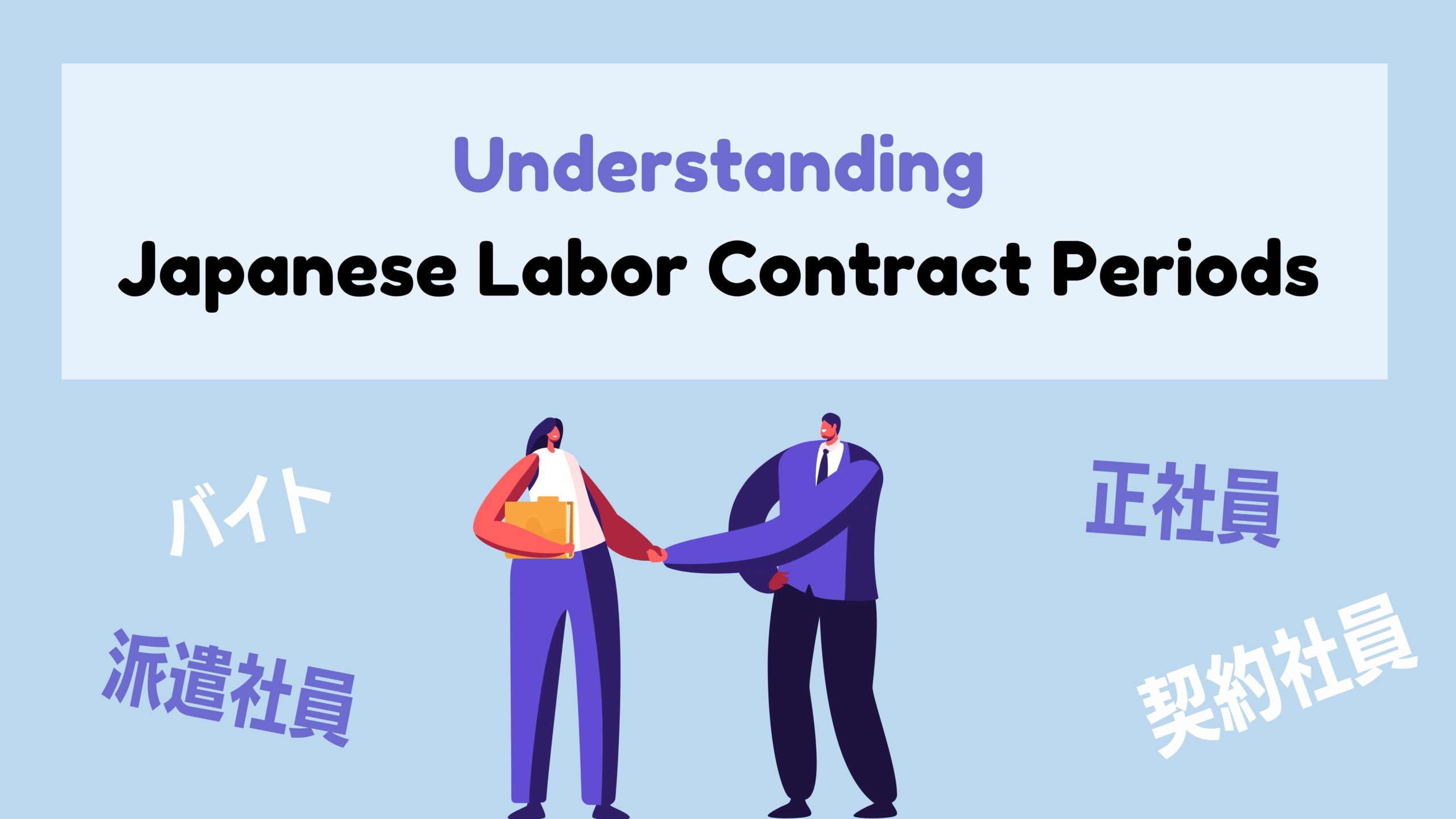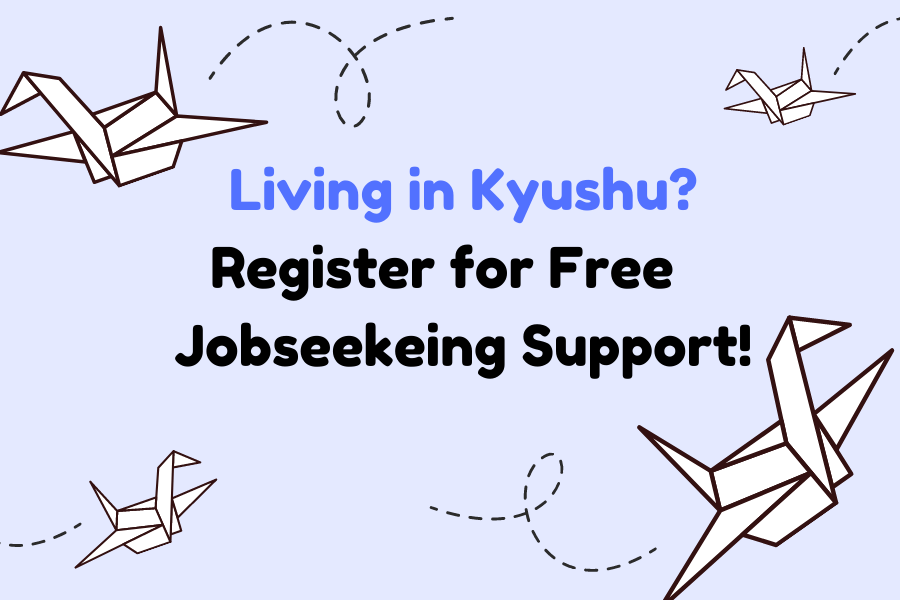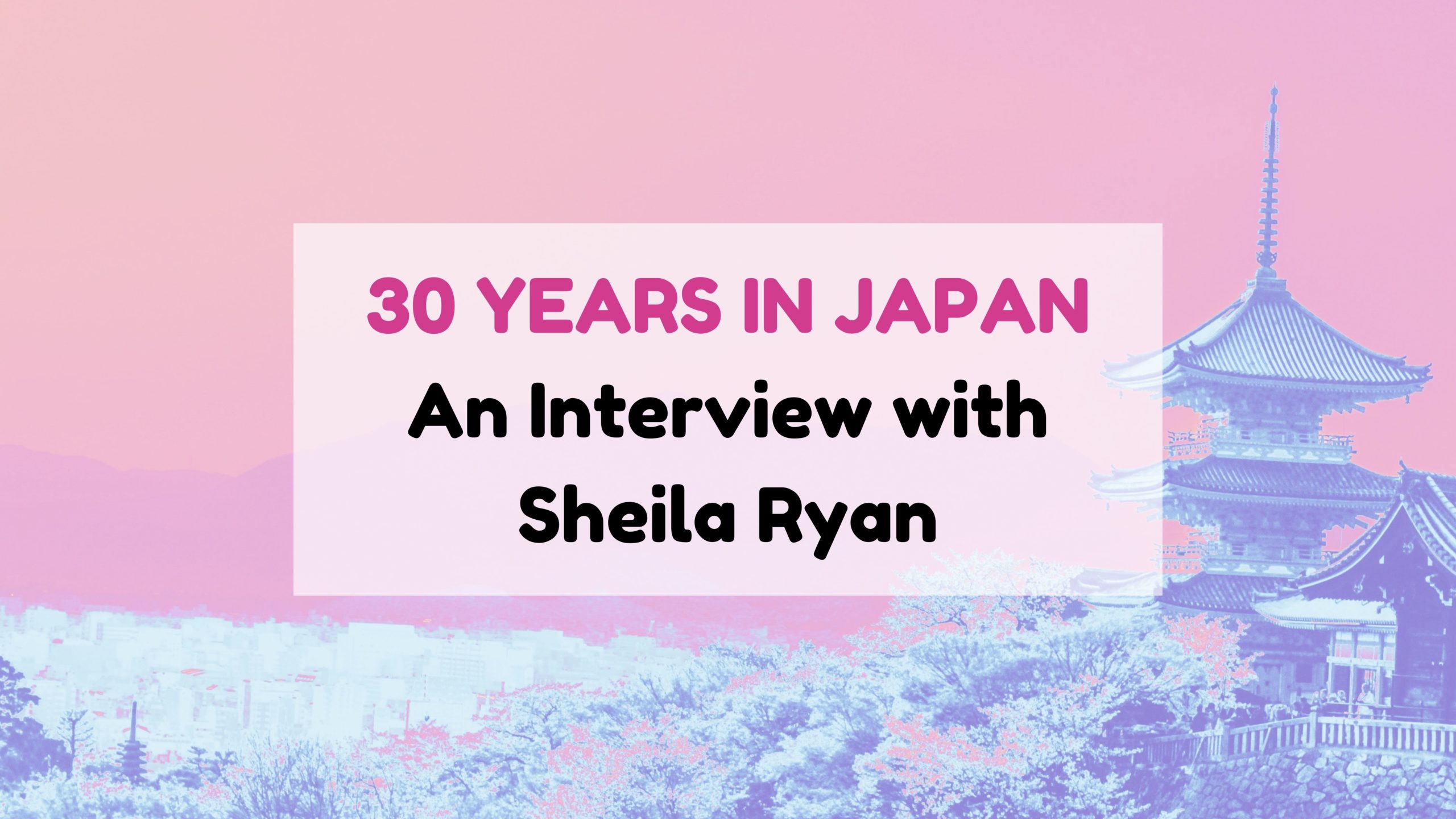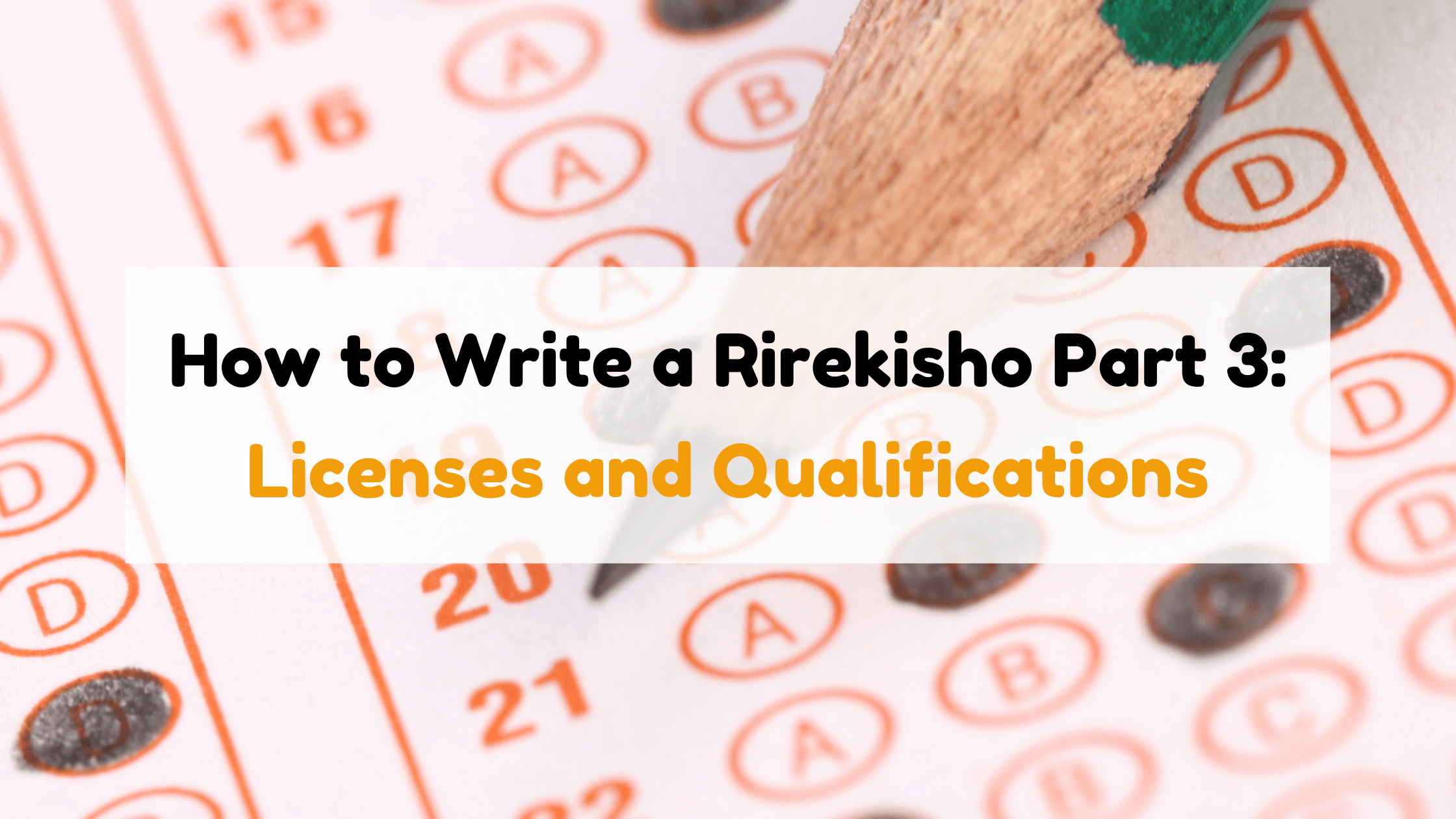When you look at a Japanese job listing or employment contract, amongst the terms of employment, you will be sure to want to check out the labor contract period.
The labor contract period, or 雇用契約の期間 (kouyou no kikan) specifies the length of the employment period.
This includes things like whether an employment term will be for a fixed period or an unfixed period, as well as the number of days and hours one is expected to work per week.
While the terms of Japanese employment contracts are basically governed by Japanese law, the finer details, such as salary and holidays are decided at company level.
We’ll introduce the main kinds of employment periods, so you know what you’re agreeing to before you take on a job in Japan.
Table of Contents
Types of Labor Contract Employees

In Japan, there are several commonly used terms for describing labor contract periods:
・ 正社員 (regular employees): Hired for an indefinite term
・契約社員 (fixed term employees): Hired for a fixed term
・パート・アルバイト (part-timers): Hired for a specific number of hours a week
・派遣社員 (temporary employees): Hired on a temporary basis
When you read a Japanese job ad or contract, apart from these terms, you should pay attention to whether or not a contract is a fixed term role or a permanent role.
有期 (time limitation) indicates that it is a fixed term role.
無期 (no time limitation) indicates that it is a permanent role.
Look out for these terms in the job listing or contract.
What Contracts Can Foreigners be Hired Under?

Technically speaking, foreigners can be hired under any one of these contracts, but depending on what your visa permits, there may be some limitations.
As the minimum visa length for foreigners living in Japan is a year, an employment contract period should last for at least a year, in principle.
It is possible to apply for working visa status with a contract less than a year, but there is the possibility that immigration officials will reject the request.
Therefore, if you require visa sponsorship from your workplace, you will have a much better chance of being accepted for visa sponsorship with a job offer that comes with a full-time position, so a keiyakushain or seishain position.
Foreigners who are exceptions to this
Students
Students may work part-time up to 28 hours per week under a student visa (though you must apply for a shikakugai katsudōkyoka 資格外活動許可 to do so).
Students can therefore be hired as hakken, baito or keiyakushain (temporary, part-time or regular full-time) staff, as long as the contract working hours do not exceed 28.
Foreigners holding spouse visas / Permanent Residents
Foreigners married to Japanese nationals and those with PR status do not require visa sponsorship from their employer to live in Japan.
They are therefore free to work under whatever employment contract they wish.
派遣社員 Temporary Employees (Hakenshain)
A temporary employee, or hakenshain, works for a company that has outsourced hiring to a dispatch firm, so employees can choose jobs based on the salary and hours.
Since dispatch work is not permanent, the job can be made redundant before the contract ends, making it difficult to find another job quickly.
Foreign students can be hired as hakenshain, though it should be kept in mind by both the student and the employer that working hours may not exceed 28 per week.
Seishain and Keiyakushain Contracts
As most foreigners are hired as either seishain or keiyakushain, it’s important to know the difference between the two.
It’s also important to understand that while these types of contracts exist in other countries, keiyakushain and seishain contracts carry cultural implications that are specific to Japan.
正社員 Seishain (Regular Employee Contracts)
Regular employee contracts, or seishain contracts, are basically contracts with no fixed end date.
Job security for life
In Japan, seishain contracts are traditionally associated with job security.
This is due to the effects of a lifetime employment model, developed during Japan’s postwar period of the 1960s-80s.
More responsibility than keiyakushain
Being a seishain means working late when needed, or transferring to other branches at the request of the company.
This could involve moving to another city, prefecture or even country, and living away from family.
Seishain can progress their career through promotions
In Japan, a person’s position and salary tend to increase with age and years of service, rather than contribution of skills and ideas like in western countries. As a seishain, there may be more opportunities for promotion.
This means there is also the potential for a better salary over time, and new responsibilities.
Termination of a seishain contract
In Japan, all 4 of the following conditions must be met to terminate a seishain contract:
- The employee is not deemed “necessary” for business operations
- The company demonstrates making an effort to avoid termination
- The company’s selection of personnel is deemed “appropriate”
- The company has given sufficient explanation to the employee
契約社員 Keiyakushain (Fixed Term Employee Contracts)
Fixed term employee contracts are basically contracts that last for a specified period of up to three years.
Fixed-term in principle but more often than not renewed
Most Japanese companies will offer keiyakushain contracts for a period of one year. However, these are generally renewed on a year to year basis, unless there is a specific reason, such as there is no longer a need for the position.
Contracts are defined by each individual company
What all keiyakushain have in common is the fact that their contracts are for a fixed term. However, other details depend entirely on the working conditions (労働条件通知書) laid out in each individual contract.
These include things like the period of the working term, place of work, job description, working hours, rest hours, holidays, salaries, retirement and dismissal conditions.
In principle there are no transfers, with keiyakushain staying at one office of employment for their contract period.
Keiyakushain may be able to work with a higher degree of flexibility
Contracted employment is suited to those who seek flexibility in their careers by working for a definite period of time, such as one year.
Also, depending on the company, keiyakushain may also be able to choose fewer days or hours per week.
However, this depends on the company. Some companies have it set so that keiyakushain work the same number of hours and days as seishain.
Rewards and other perks might be fewer compared to seishain
It is common in Japan for companies to award biannual bonuses to employees. Where this is true, it is often the case that seishain receive more than keiyakushain.
There are also companies that don’t grant bonuses to keiyakushain at all. On the other hand, there are companies that pay both equally. If you are interested in knowing the details, you can ask at the interview, or check the job description when applying.
Unlike seishain, keiyakushain are also not usually entitled to severance pay upon retirement.
Keiyakushain cannot be promoted, but..
In Japan it is common for people to start out as keiyakushain, and be “promoted” to seishain after some years of working at the same company.
This will depend on the company however. It’s a good idea to ask at interview if this is a possibility for the future, if it is something you are hoping for.
Some companies may not have such a system for a multitude of reasons. It could be that the company simply doesn’t have the paperwork to physically hire seishain.
It might be that a company is looking to hire people for specific periods, or people of specific ages (something that is not illegal in Japan).
In such cases, a system that favors hiring keiyakushain may work better for the company’s interests.
Achieving permanent status under the “5-Year rule”
There is a rule in Japan that dictates that once keiyakushain have been employed for a period of 5 years, the company must give them a permanent contract. This contract is called a mukirodo keiyakyu (無期労働契約).
This is not the same thing as becoming a seishain.
The only aspect of the contract that changes is that the employment period goes from having a time limitation (有期) to having none (無期).
Other working conditions that were laid out in the rodojoken tsuchisho (労働条件通知書) stay the same.
Some companies add clauses in contracts, to avoid granting mukirodo keiyaku.
These state that a contract can only be renewed up to five times, but no more. Be sure to look out for this if you are going into a keiyakushain position and hoping to get permanent status via the five-year law.
Termination of a keiyakushain contract
If the employer chooses not to continue to employ the keiyakushain, under law, the employer is required to give 30 days’ notice to the employee.
It is courtesy in Japan for an employee too, to give 30 days’ notice to their employer before leaving a job, and this is true for keiyakushain, too.
To Work as a Keiyakushain or a Seishain
From the above, you can see that the main difference between keiyakushain and seishain is that one has a limited employment period, and one does not.
As well as job security, the seishain position also tends to have the potential for promotion within the company, with higher salaries and bonuses, but this can depend on the company.
On the other hand, seishain have more responsibilities and pressure. They may work for longer hours, may have to transfer locations, and cover junior and part-time workers.
Keiyakushain have more freedom and flexibility, but they may not receive good bonuses or opportunities for career progression.
It could also be said that the lifetime employment model is dying in Japan.
There is less and less stigma attached to job hopping, so perhaps the seishain model no longer fits modern Japanese working styles, anyway.
If you see yourself working at a company for a few years to improve your skills before hopping on to a better opportunity at a different company, it probably won’t affect you if you want to work somewhere as a keiyakushain for a few years.
On the other hand, if stability and growing your career at one company appeals to you, then a seishain position might sound more appealing.
It’s also important to think in terms of what skills and career you can acquire at a particular job, over the type of contract you’re being offered.
You may find yourself compromising your contract in favor of taking a job that you just really want. What you choose depends entirely on your priorities and goals.
As long as you are clear on these things, you will be able to make an informed decision on what job and contract type will ultimately suit you best.
For more information on Japanese job hunting and free job seeking support, get in touch with us at intalink@qbfront.co.jp






